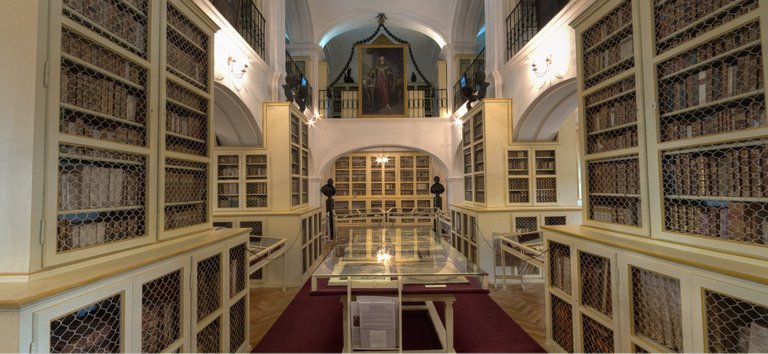At the beginning of January, when I was visiting the old city center of Targu Mures, I passed by the Teleki Museum, which is an important tourist attraction for those who like culture.
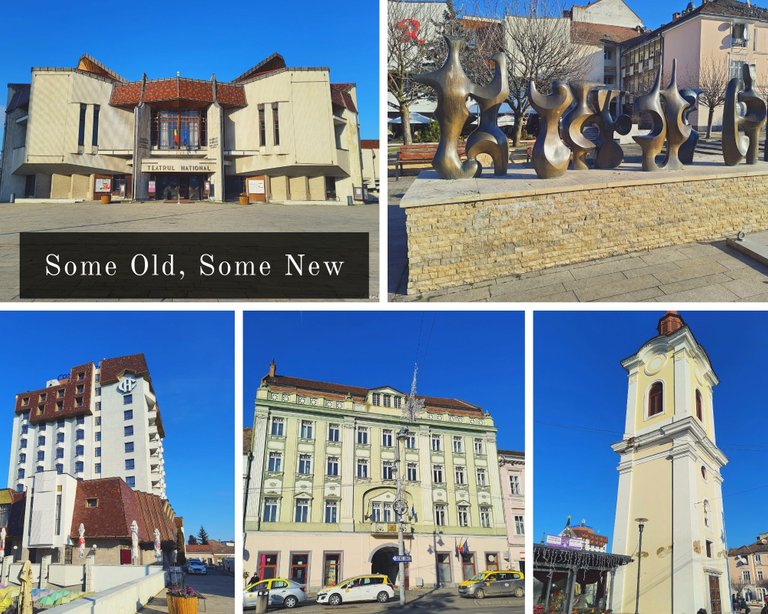
The Teleki Library (Hungarian: Teleki Téka, Romanian: Biblioteca Teleki-Bolyai), also known as Teleki-Bolyai Library and Bibliotheca Telekiana, is a historic public library and current museum in Târgu-Mureş, Romania. One of the richest Transylvanian collections of cultural artefacts, it was founded by the Hungarian Count Sámuel Teleki in 1802, at the time when Transylvania was part of the Habsburg Monarchy, and has been open to the reading public ever since. It was among the first institutions of its kind in the Kingdom of Hungary. source
It is the oldest library of the city, with over 200k books, a real cultural treasury, testifying about the history of the city. Visiting the library is like going back in time. The problem is, due to the vulnerability of the books photographing is not allowed. Can you imagine the heartache I had, while I was admiring the beauty the place has to offer?
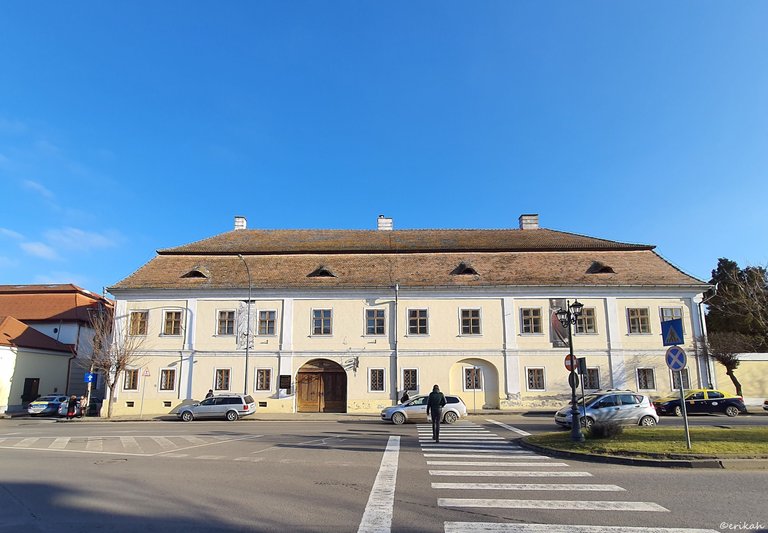
The library can be found at the Bolyai Square, in the vicinity of the Bolyai high school.
This is a screenshot I got from a tourist website, to show you what to expect. The exterior of the building is not something that would attract the eye, the inner court isn't either, but the interior gives you a clue of the architectural style of those times. It's a real pleasure to look at the building alone, let alone those old books.
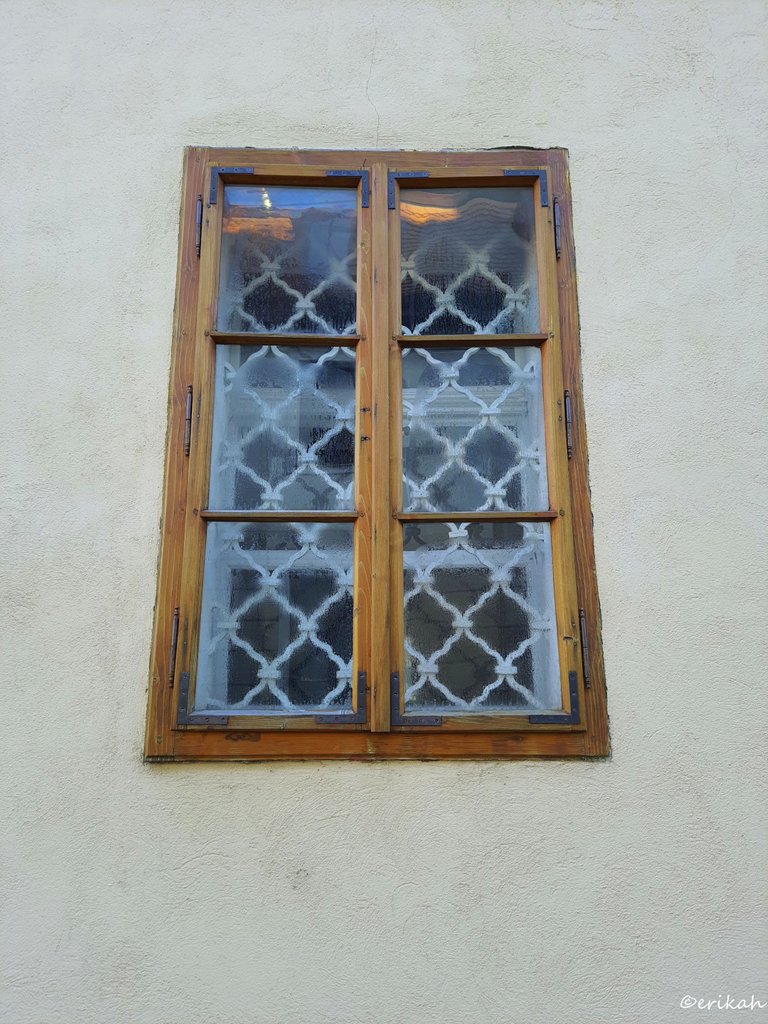
The building is at the corner of Bolyai Square and the Tamás Borsos street. The left side of the building that is in the Tamás Borsos street has some very interesting windows, preserving the original style. These outside windows must be kept as they were back in the day, so inside there are other windows, that are up to date with technology.
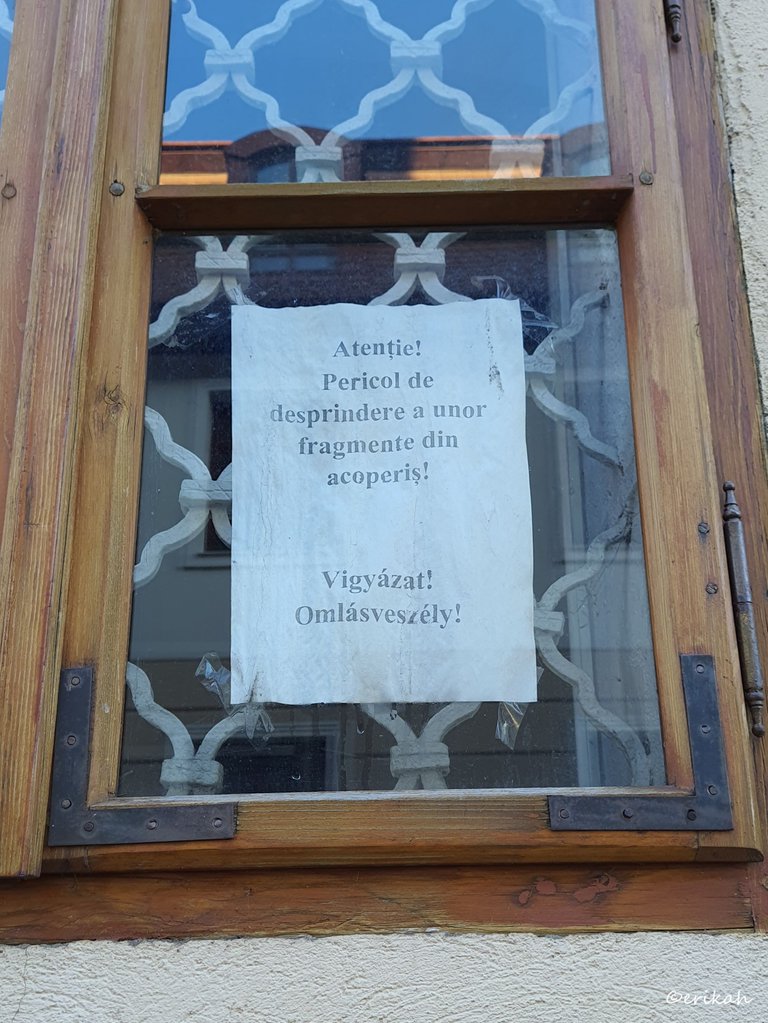
The sad part of the story is this sign on almost every window, letting people know there's danger of collapse, parts of the roof can fall at times. This means restoration works are urgently needed. The question is when they can get the funds from the city budget to get started.
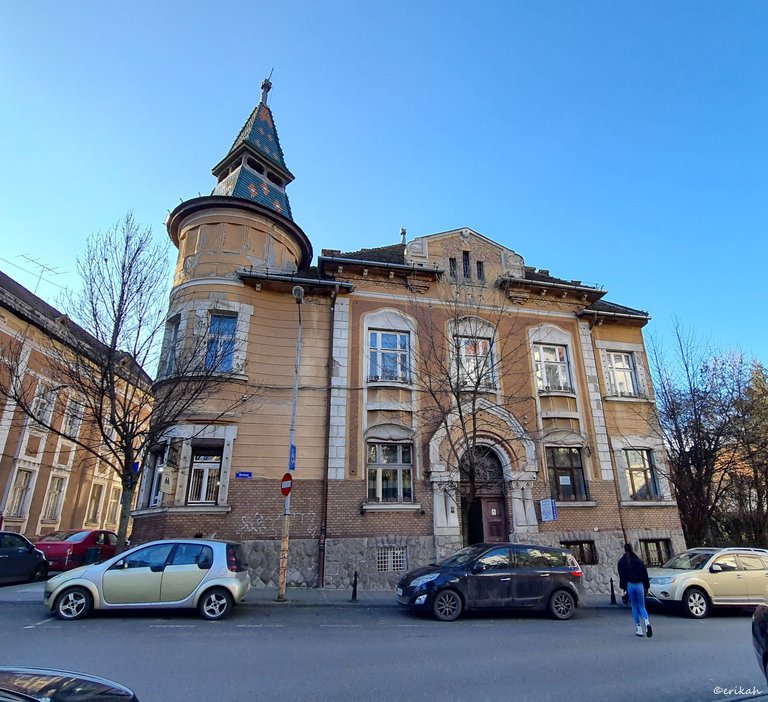
Heading to the city center I spotted this beautiful art nouveau building, that must have been a real palace back in the previous century.
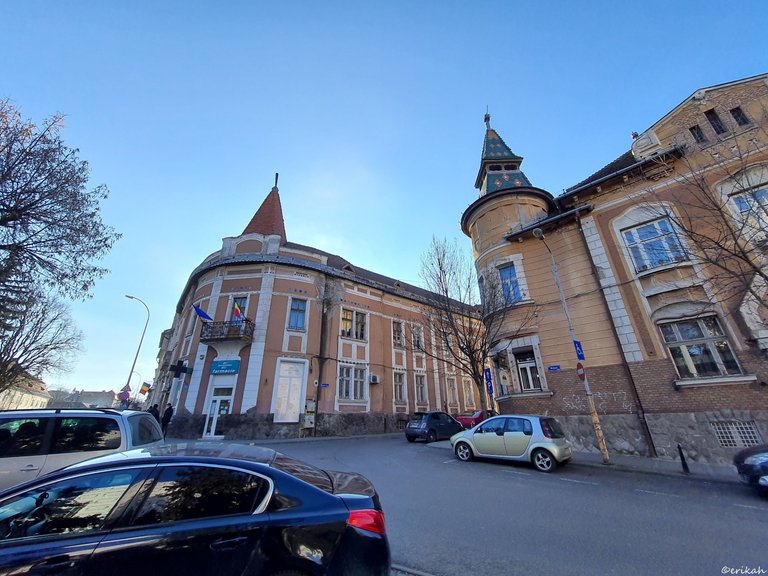
Can't explain why but I love this style, even though the maintenance must cost a fortune, not to mention the heating bills those high ceiling rooms must generate and the noise from the traffic. At the beginning of the 20th century, these streets were used by carriages.
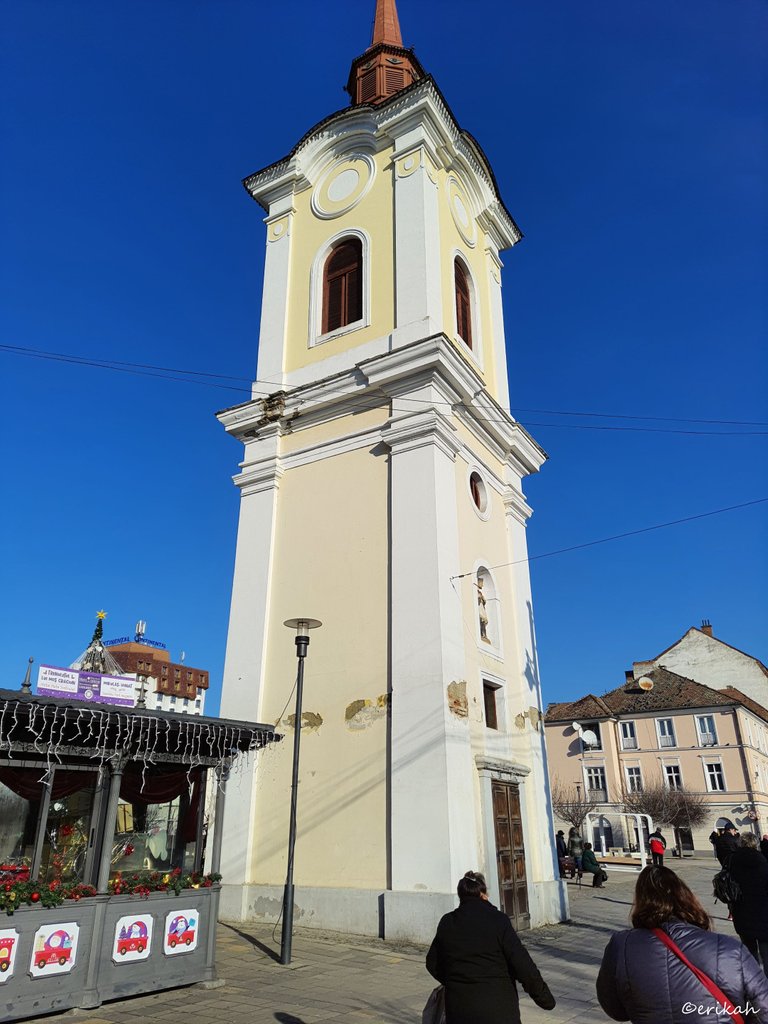
In the city center, in the middle of the Theater Square there's the tower of the Franciscan church. This is what's left of an 18th-century Franciscan monastery, one tower.
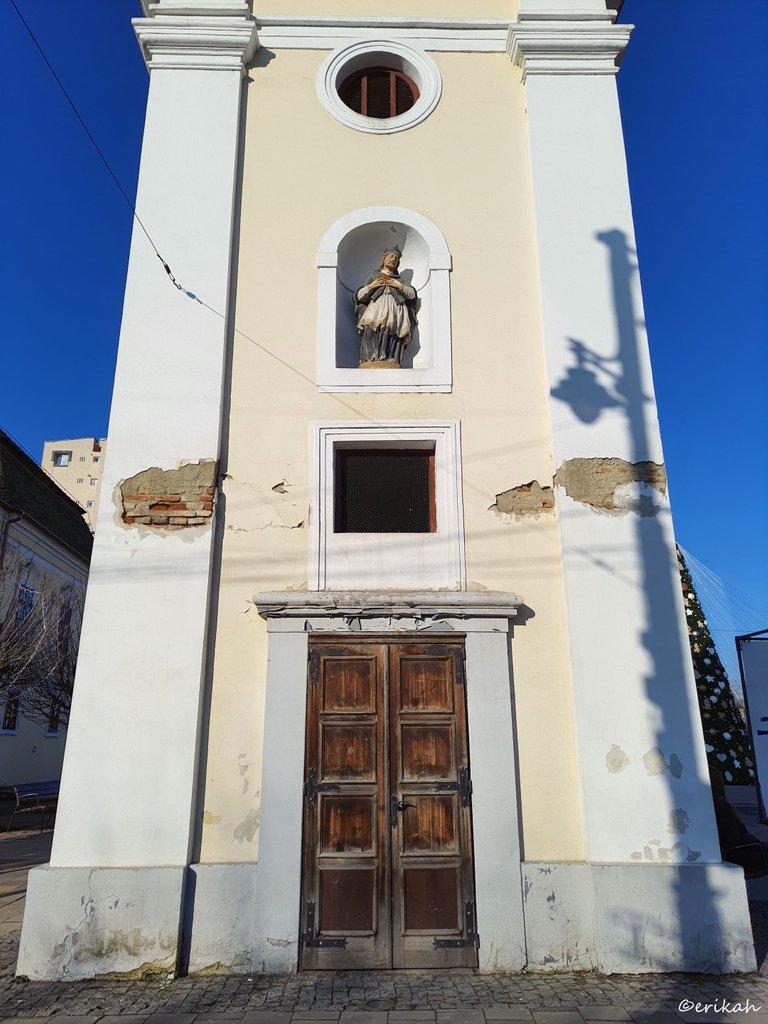
Built in Baroque style the church served as monastery, church school as well. The construction started in 1745 and was finished in 1777 but the tower you see here was finished only in 1802. The church then was demolished in 1971, to make room for the new theater I'm going to show you below. source of translation
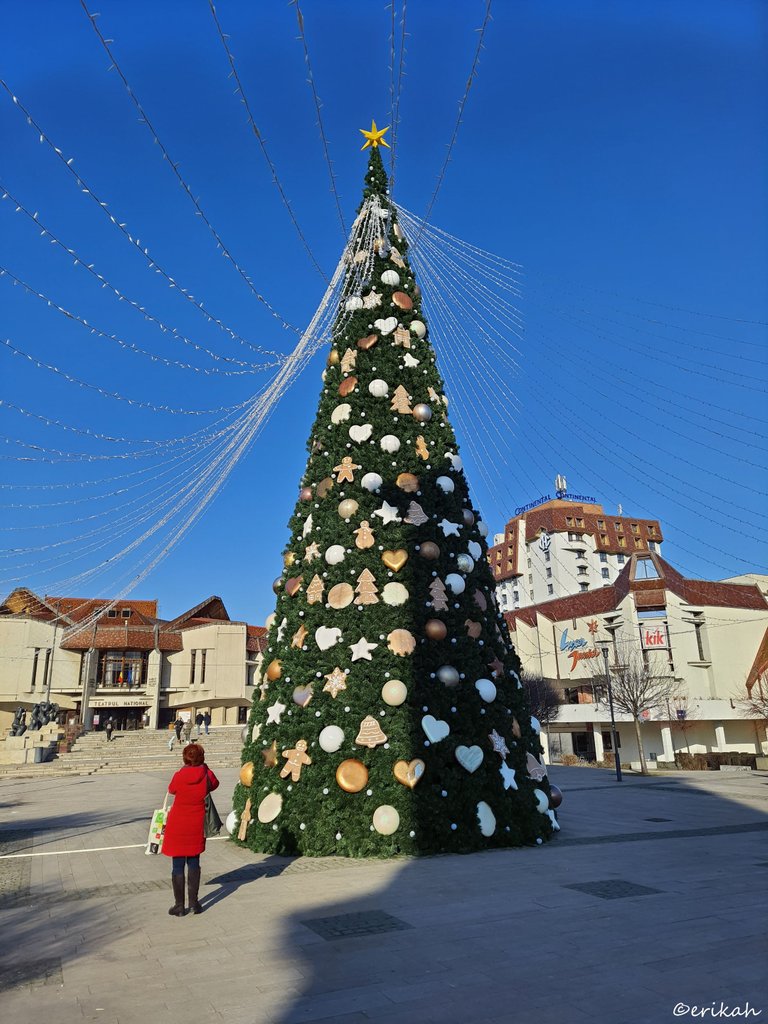
I was there in the second week of January, the Christmas tree was still standing at the Theater Square.
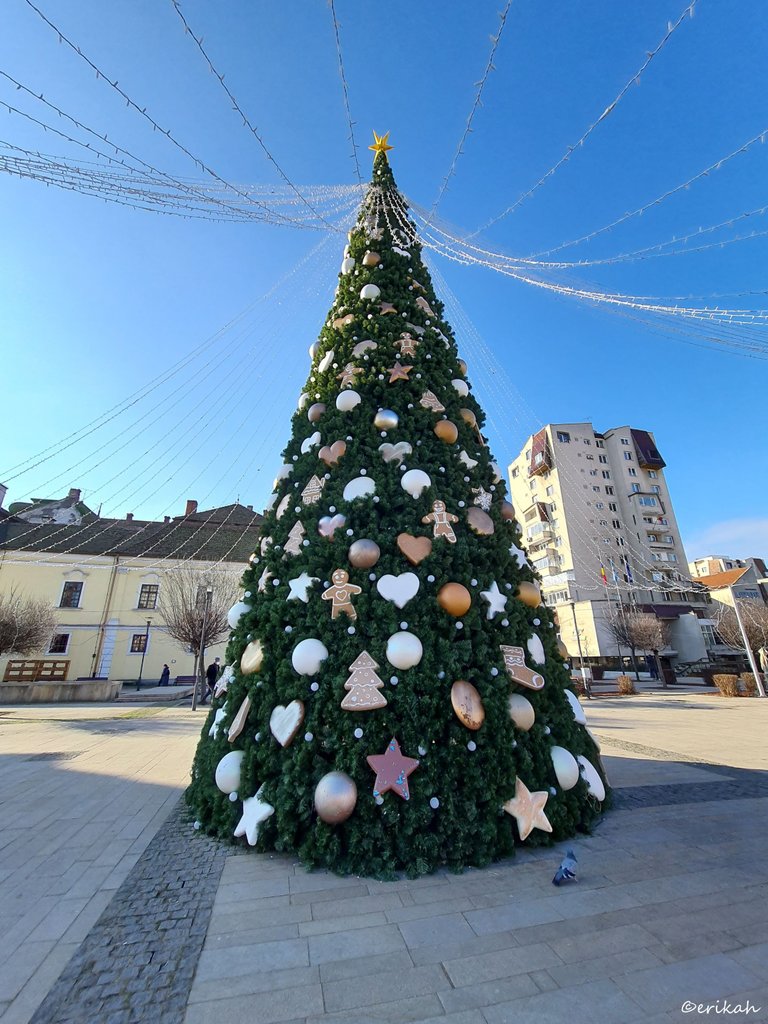
I've read somewhere that the city council has decided to buy a plastic tree, instead of putting up a real tree, that costs a fortune. This way this plastic tree an be used several times and funds can be channeled elsewhere, where there's need for funding. Seems like a good idea to me and the tree was quite nice.
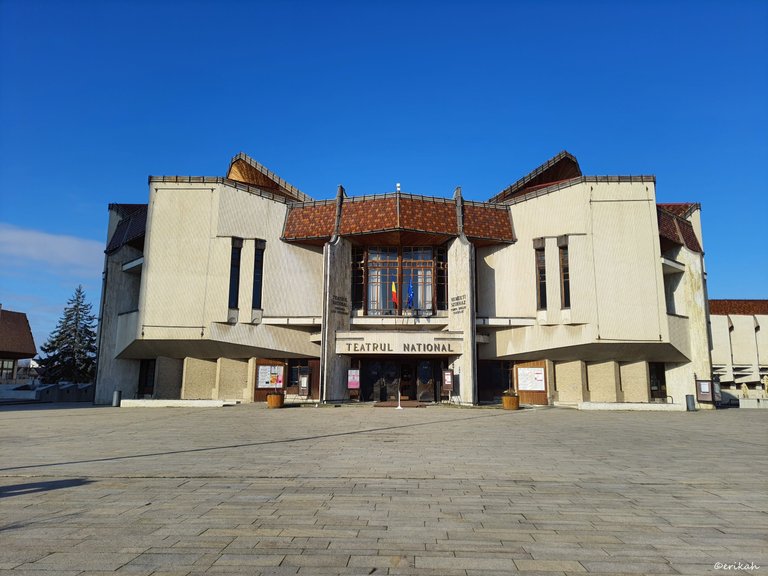
And this is the National Theater that is hosting both the Hungarian and Romanian actors.

The theater was not open for visitors, but I remembered I took some photos in 2013 when last visited. Sorry for the quality, it was taken with an old Nokia I believe.
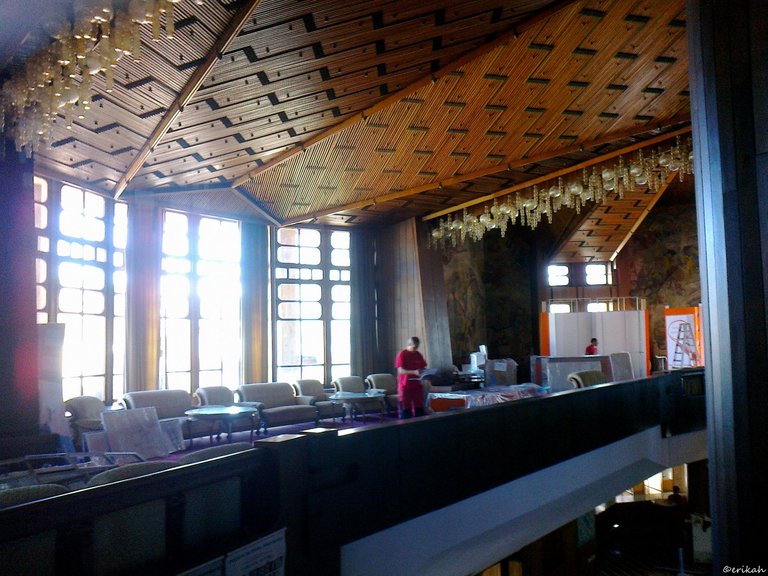
This is the the first floor of the foyer.
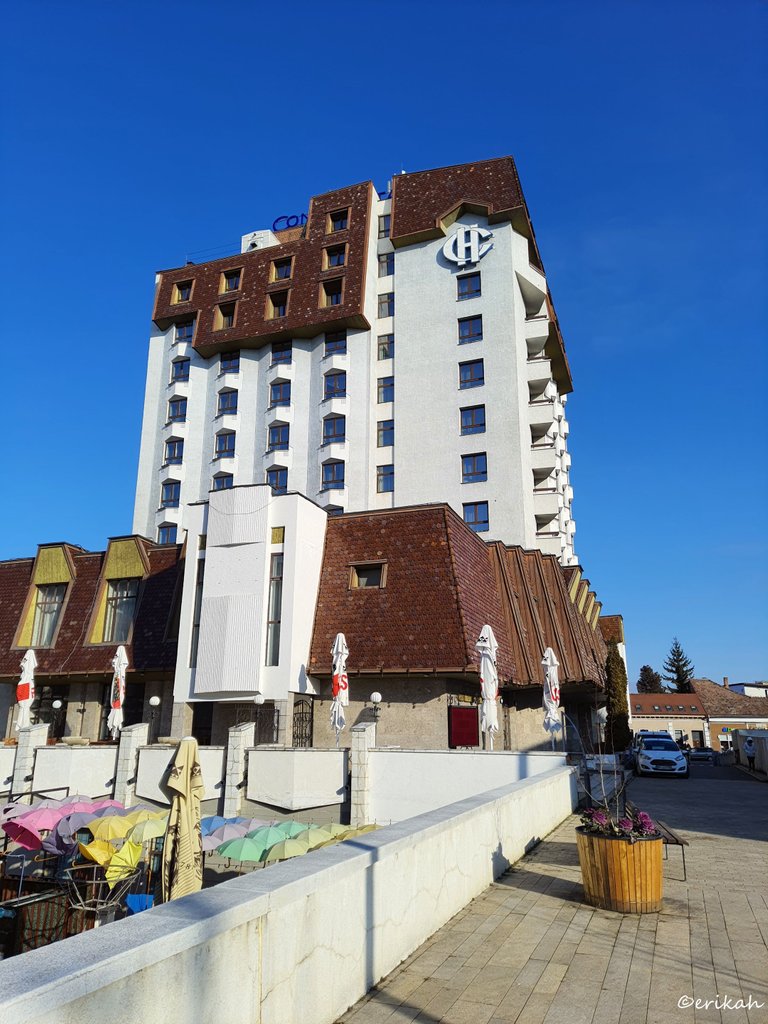
Right to the theater there's the 4 star Continental Hotel.
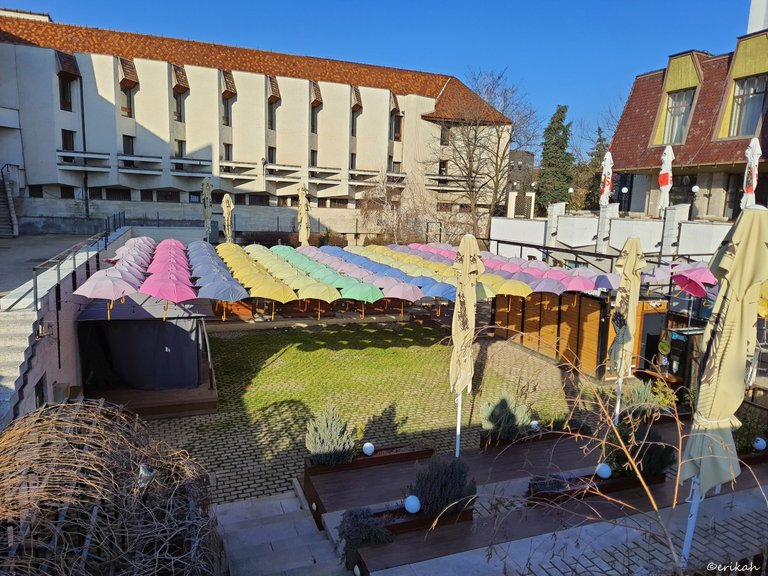
Between the theater and the hotel, one level lower there's a terrace, covered with umbrellas that must be nice during summer.
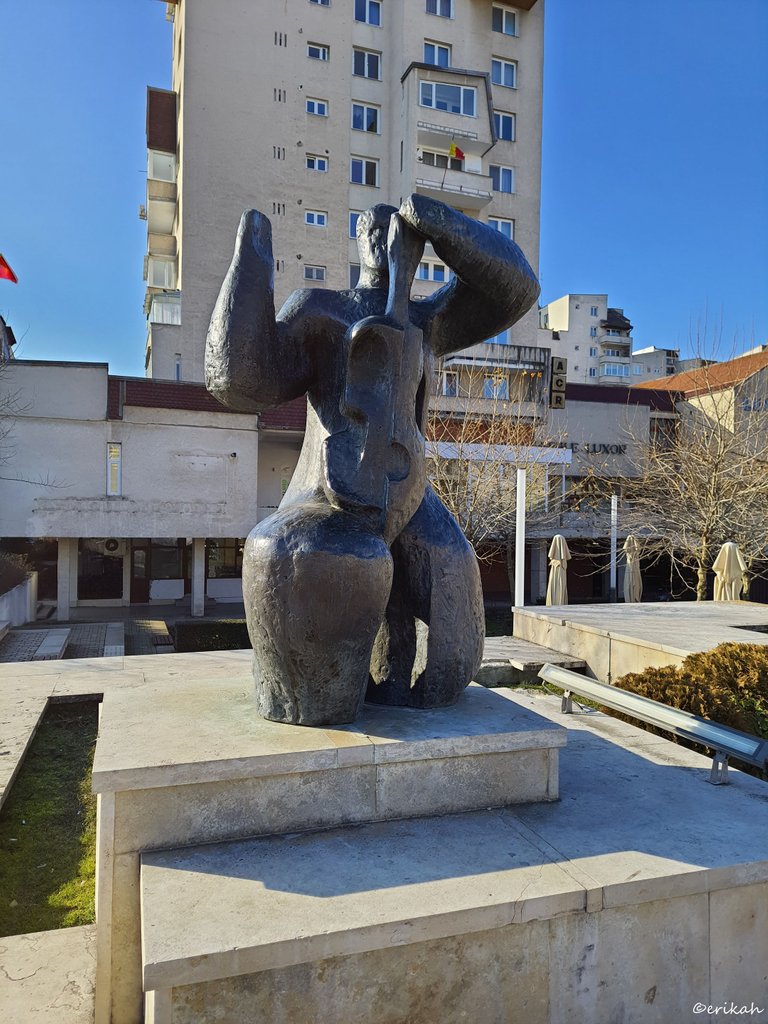
And now comes the signature of the communist era. There are several sculptures like this, decorating both sides of the square.
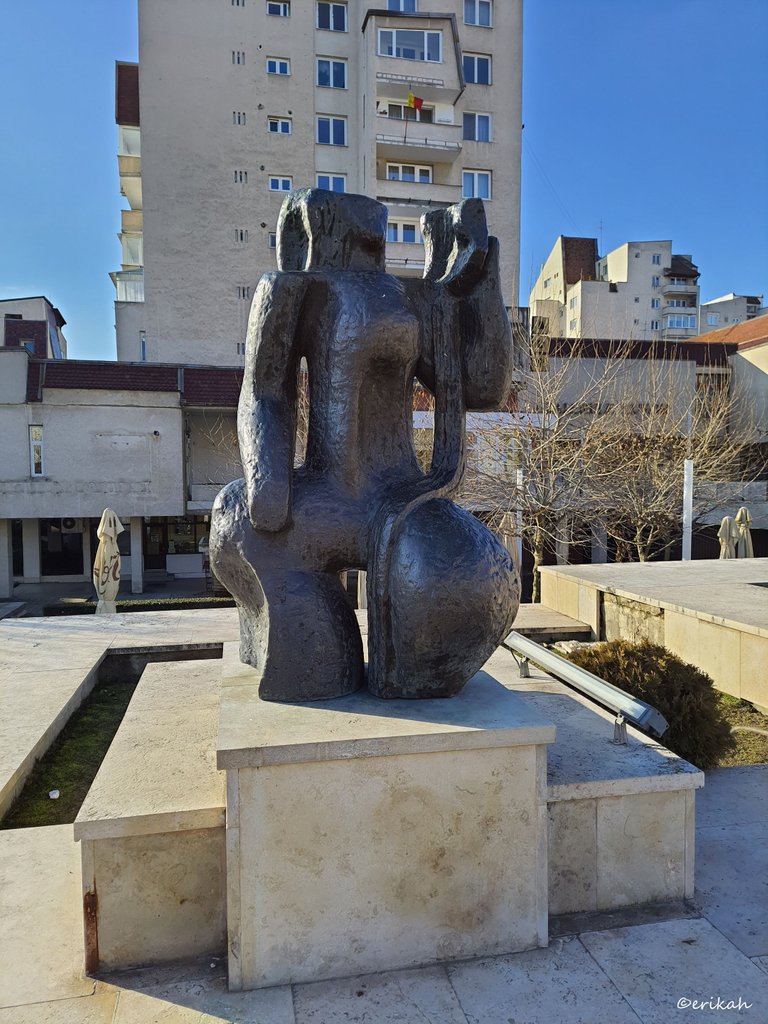
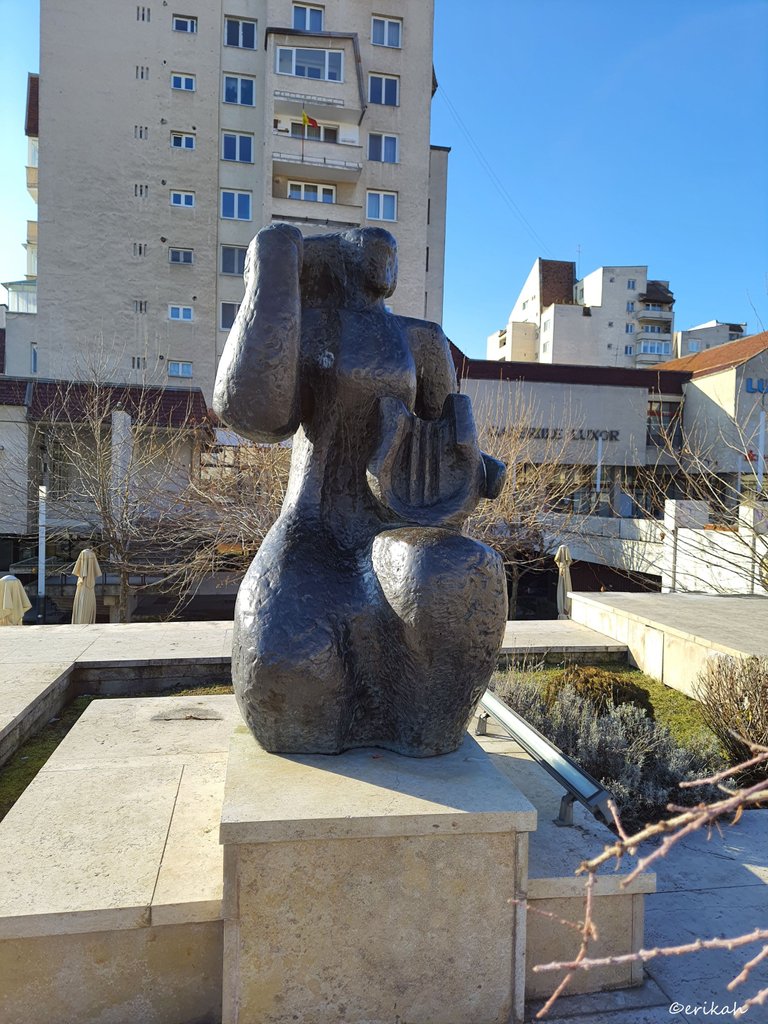
This kind of art is typical of communist times, you can find similar statues in other cities as well. I'm not sure why this style was favored honestly.
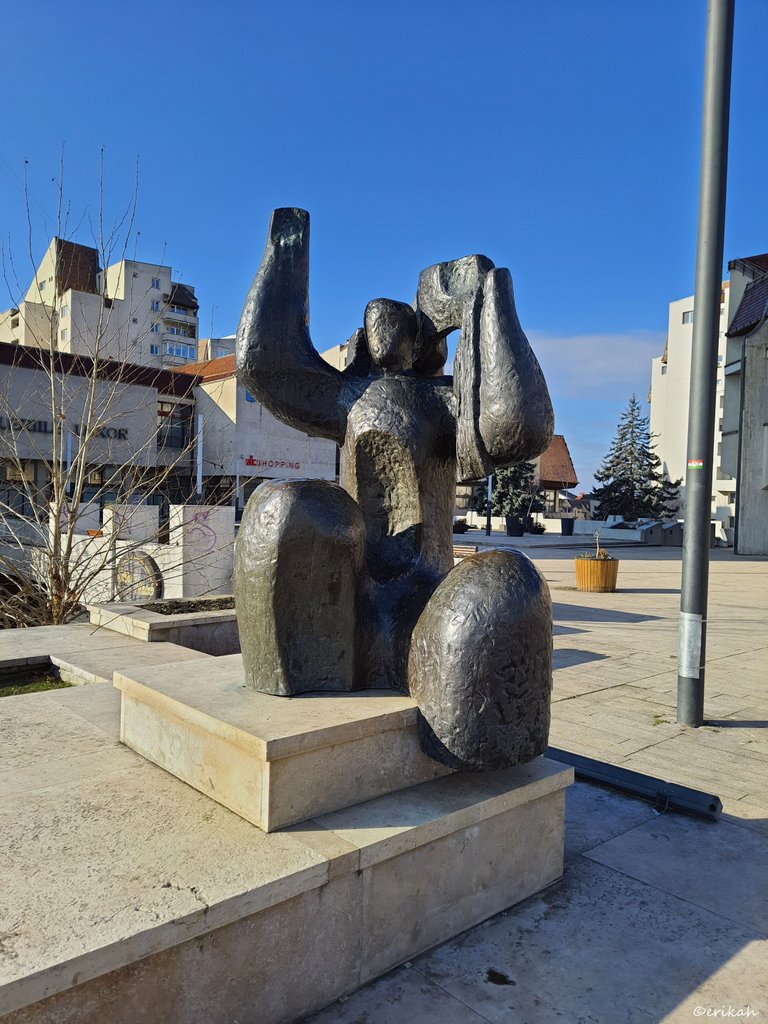
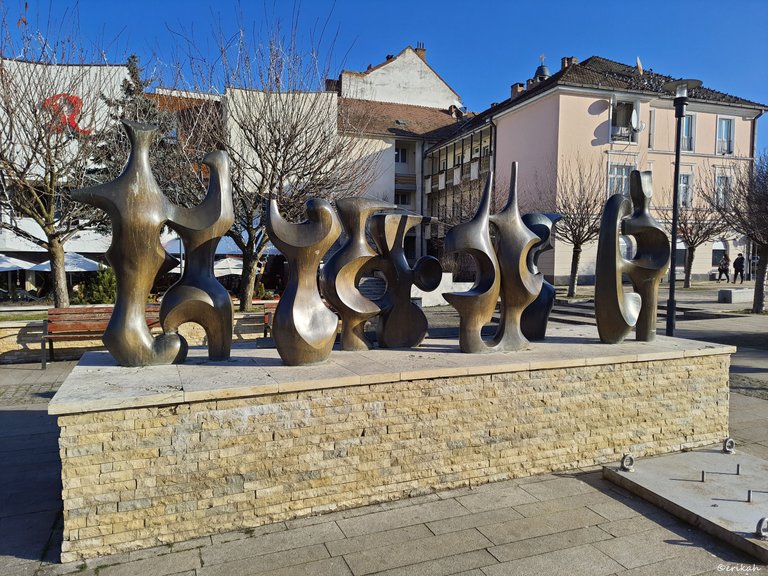
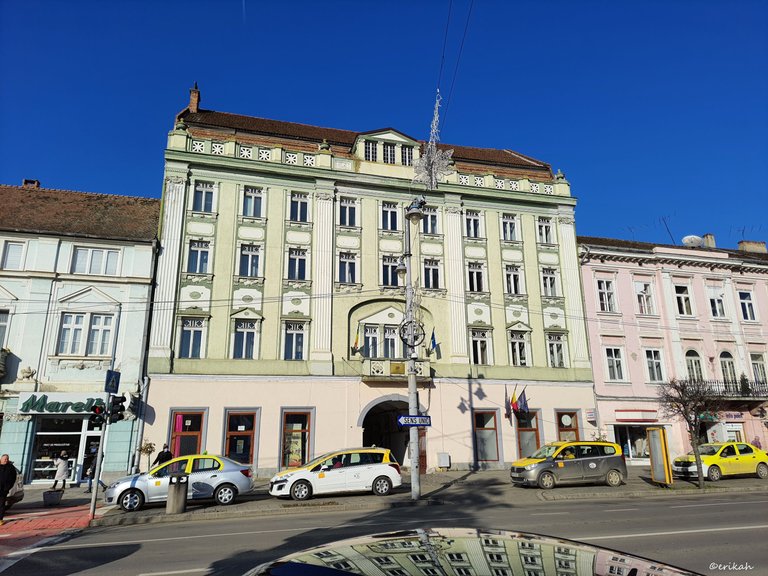
Another wonderful baroque stile building is the Bányai palace.
It was built by Béla Bányai butcher master between 1904 and 1907, based on the plans of engineer Nagy Győző. Mayor György Bernády lived on the first floor of the house between 1936-37, and the famous Édeslyuk restaurant was in the courtyard. source of translation

